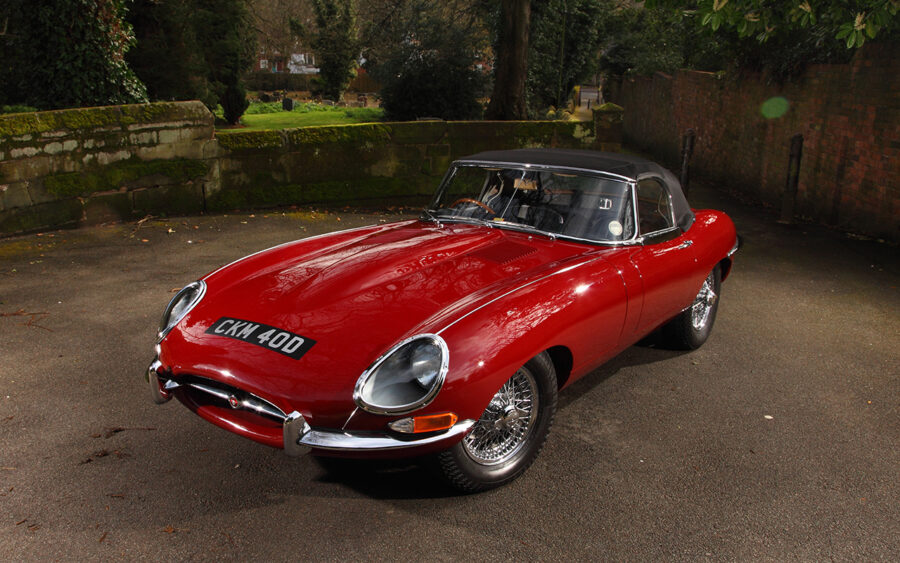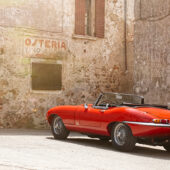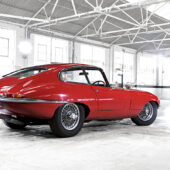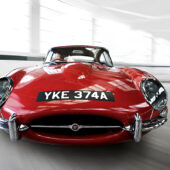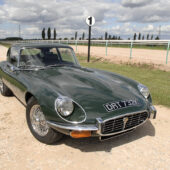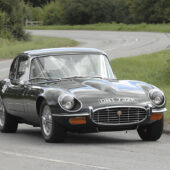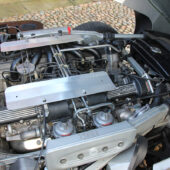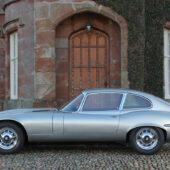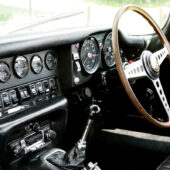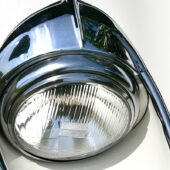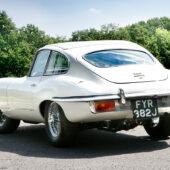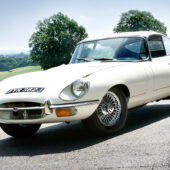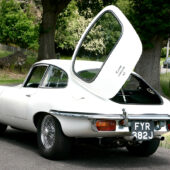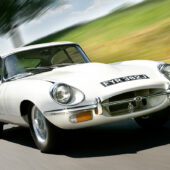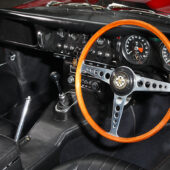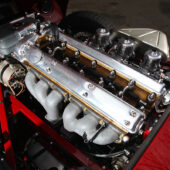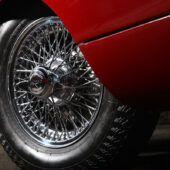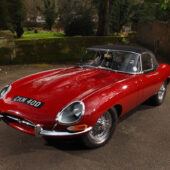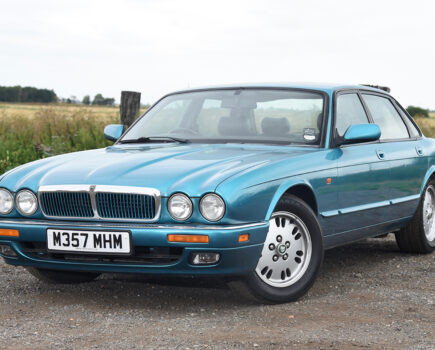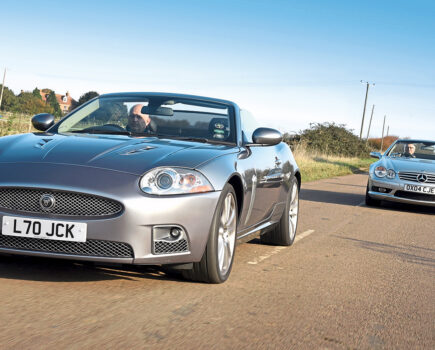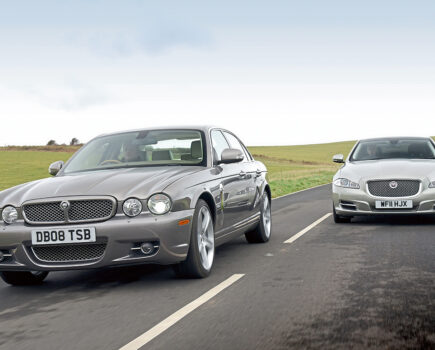Jaguar’s most famous sports car saw many changes through its lengthy production run; here’s everything you need to know about the Jaguar E-type
Words: Jim Patten
If there’s one car that’s appeared in more ‘Best of British’ or ‘Most Beautiful’ listings than just about any other, it’s the Jaguar E-type – a machine so stunningly elegant that even Enzo Ferrari remarked upon its aesthetic perfection. Intriguingly though, the E-type’s sleek lines – surely its most famous asset – were the result of a function-first approach, its final shape being dictated by applying aerodynamic principles to automotive design. The primary purpose of the E-type was to go fast, and designer Malcolm Sayer – who had already given the world the C- and D-type – employed his experience with aerodynamics to good effect, using mathematical principles to create the car’s shape. The end product was, of course, undeniably beautiful… but also very fast, exactly as intended.
To complement its aerodynamic efficiency, the E-type needed an impressive power source, which naturally meant Jaguar continuing with its hugely successful and highly competitive XK engine. The twin-cam straight-six had become increasingly more powerful over the years, with the original 160bhp provided for the Jaguar XK120 (helping it to be become the world’s fastest production car) growing to 220bhp – and 3.8-litre capacity – by the time of the XK150. The XK had produced even more power in racing guise, with the success of the C- and D-type demonstrating its ultimate potential.
Malcolm Sayer had joined Jaguar in 1950 after a decade at the Bristol Aeroplane Company and had been responsible for the bodywork of the C-type, which won at Le Mans in 1951 and ’53. Leading the team that would produce the E-type was Bill Heynes, Jaguar’s technical director, who had been with the firm since its pre-war days. The story of the E-type begins with Heynes’s XKC project, a one-off exercise designed to investigate monocoque construction, resulting in the D-Type racer.
The first E-type prototype – dubbed E1A for E-type number one, aluminium – was largely derived from the D-type in construction, while in terms of size it sat between the D-Type and the production E-type. Where it differed from the D-type was at the back, where an elegant new independent rear suspension had been developed, a concept that would last Jaguar well into the 1990s. Power came from the 2.4-litre incarnation of the XK motor (plucked from what we now know as the Mk1 saloon), and even with just 120bhp the prototype went well. The E1A was joined in 1958 by a second prototype, with a third being built up in ’59. The following year saw the unveiling of a sports-racer under the tag E2A, based on the D-type but with styling cues that are recognisably E-type.
In the end, the production version of the E-type featured Sayer’s curving monocoque bodywork, beneath which was found the iron-block, alloy-head XK engine in 3.8-litre form. Breathing through triple SUs, it was rated at an optimistic 265bhp and powered the rear wheels via a four-speed Moss gearbox. The rear end featured the newly developed independent rear suspension while the front relied on torsion bars.
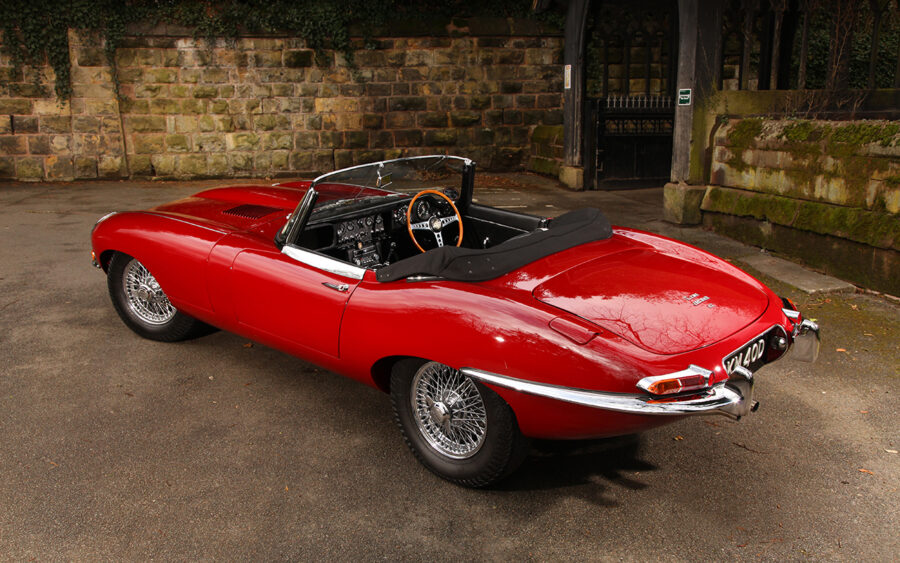
The E-type unveiling was scheduled to take place at the Geneva Motor Show in 1961, with Jaguar having provided two cars beforehand to The Autocar and The Motor magazines. A car for the show stand was duly transported to the Parc des Eaux Vives in Geneva, but such was the demand for demonstration runs that William Lyons realised a second car would be required, and so instructed PR man Bob Berry to bring another to Switzerland. The quickest way to do it was to simply drive the E-type from Coventry to Geneva, which Berry duly did, spearing through the night in 9600 HP – the now-famous first production version of the E-type FHC, owned by Jaguar historian Philip Porter for the last four decades. After throwing a bucket of water over it at the local Jaguar dealer in Geneva, 9600 HP was subsequently presented to the world’s media, resulting in the iconic photograph of Lyons stood next to it, hand in jacket pocket.
Two different E-type models were initially available: the roadster and the coupé, the latter with its side-opening rear tailgate. Just as attention-grabbing as the E-type’s styling, meanwhile, was the newcomer’s highly competitive pricing, which saw the open-top version listed at £2,097 and its coupé cousin at £2,196. This made the headline-grabbing new Jaguar vastly cheaper than anything else with comparable performance.
The media reaction to the E-type’s Geneva debut was overwhelmingly positive. Those pre-launch press cars had clearly been well prepared at Browns Lane, with The Motor recording 0-60mph in just 7.1 seconds and a top end of 149mph, while The Autocar managed to crack the magic 150 barrier with 9600 HP, reaching 60mph along the way in just 6.9 seconds.
It wasn’t all perfect, of course. Production cars were generally reckoned not to be as powerful as the carefully prepared press cars, and the E-type was criticised for its lack of interior space, marginal brakes and heavy oil consumption. Any doubts about the production E-type’s ability to crack 150mph were silenced, however, by the installation of the 4.2-litre version of the XK engine in 1964. The official power output remained the same (at 265bhp) but was arguably a more honest figure this time round, while the larger engine also benefited from increased torque. Electrics, seating and other details were revised at the same time, while Jaguar’s four-speed gearbox – complete with synchromesh on first gear – was adopted in place of the previous Moss unit.
While Jaguar’s biggest news of 1966 was its integration into the mighty BMC organisation, the same year saw the launch of a more versatile E-type in the shape of the 2+2, again launched at the Geneva Salon. Available only as a coupé, it was built on a wheelbase that was nine inches longer than before, whilst also adding a taller screen, longer doors and, of course, a small rear seat. In a nod to the likely market for the car, the 2+2 was also offered with optional Borg Warner automatic transmission.

The next major revision to the E-type came in 1967, when the cars now usually referred to as the Series 1½ were launched, featuring changes dictated by impending US legislation. Jaguar claimed some 21 updates were made, including the removal of the Perspex headlamp covers, with the lamps themselves having moved forwards by 2.5 inches.
A particularly important year for Jaguar was 1968, which saw not only the debut of the crucial new XJ6 saloon but also the announcement of the Series 2 E-type, the latter featuring chunky bumpers wrapping further round the bodywork, repositioned tail lamps, as well as a bigger front intake allowing greater air-flow to suit cars with newly-available air conditioning. Power steering was now available, while the 2+2 gained a more raked windscreen to give it a less ungainly appearance. All versions also gained a safety-inspired interior, with rocker switches instead of the rows of sharp toggles.
These changes undoubtedly helped to keep the E-type competitive, especially for the all-important American export market, where power steering and air conditioning were deemed essential; but by motor industry standards, the design was getting on in years and Jaguar was already looking at various design proposals for the E-type’s eventual successor. Until that was ready for launch, however, the firm saw potential in its new V12 powerplant, a unit under development for the XJ saloon but one that could also give the E-type some added appeal for its final few years on sale. After much re-engineering work to make it fit, V12-powered prototypes were up and running by 1969, with the production version being launched in March 1971 as the E-type Series 3.
The E-type Series 3 featured numerous major changes. It had flared arches, a wider track and an additional two and a half inches in width across its bodywork. The front suspension featured anti-dive geometry to help keep the front end level under harsh braking, the brakes were uprated via a bigger servo and an extended handbrake lever, and power steering came as standard. But it was under that vast bonnet where the Series III’s biggest difference lay.
The legendary six-cylinder XK engine had been replaced by Jaguar’s new 5,343cc all-aluminium V12, a unit inevitably destined for the XJ saloon line-up (as well as the Daimler Double-Six) but also deemed suitable for the E-type, transforming the formerly raw sports car into a true grand tourer.
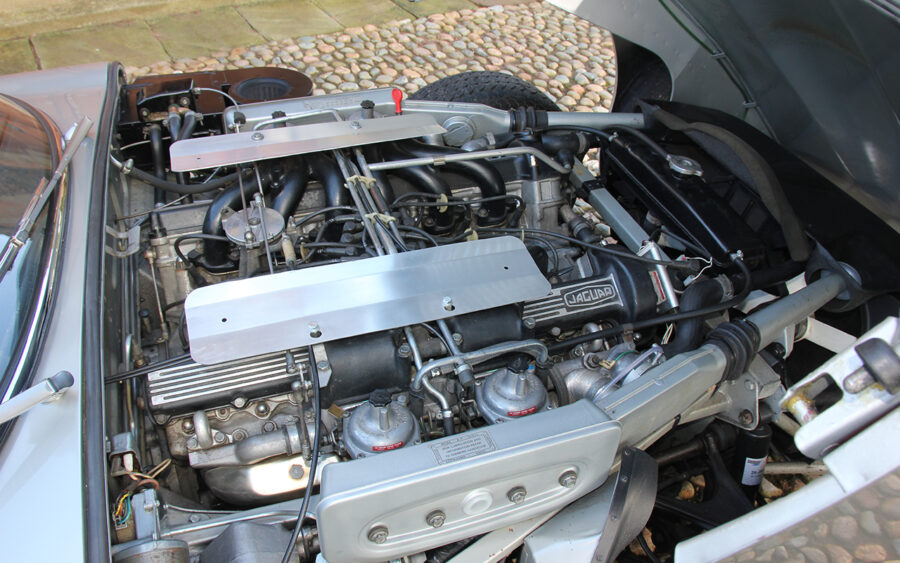
With a compression ratio of 9:1 (or 7.8:1 for American-bound models thanks to emissions regulations) the V12 produced 272bhp, which in itself wasn’t much of an advance over the previous six-pot. Where the V12 scored, however, was via its torque figure of 304lb.ft. at 3600rpm, enabling the latest E-type to become a low-revving, high-performance touring machine. It could still manage 0-60mph in under seven seconds and achieve well over double the UK motorway speed limit when driven flat out, but it was the way in which such performance was delivered that marked the change of direction. In Series 3 guise, the E-type found a new level of high-power sophistication and, as a result, appealed to a subtly different customer base.
The Series 3 remained on sale through to the 1975 model year, by which time 15,287 V12 E-types had been sold worldwide – 7,297 of them being the 2+2 version. The Series 3’s timing wasn’t ideal, of course, given the fact that a global energy crisis began during the early part of its career. Interestingly, however, the V12 E-type’s transformation into a true grand tourer also helped to prepare the way for its eventual successor – the Jaguar XJ-S – and Jaguar’s next generation of sportsters.
The last E-type soldiered on and remained in production through to June 1974 – although the number of unsold cars in stock at dealerships meant Jaguar was able to keep quiet about the axe falling for a few more months. The final fifty cars were labelled as commemorative models, with 49 finished in black and a single car in British Racing Green. The curtain had fallen on a British legend, bringing to an end the most famous Jaguar sports car of all time.
Jaguar E-type timeline
1961
Jaguar E-type 3.8 Series 1 unveiled at the Geneva Motor Show
1964
Series 1 3.8 goes off sale in October
4.2-litre E-type S1 arrives
1966
E-type 2+2 introduced
1967
Series 1½ introduced with US-orientated detail changes
1968
Series 2 E-type 4.2 arrives
1971
Series 3 E-type arrives in March
1974
E-type axed in June, replaced by Jaguar XJ-S

